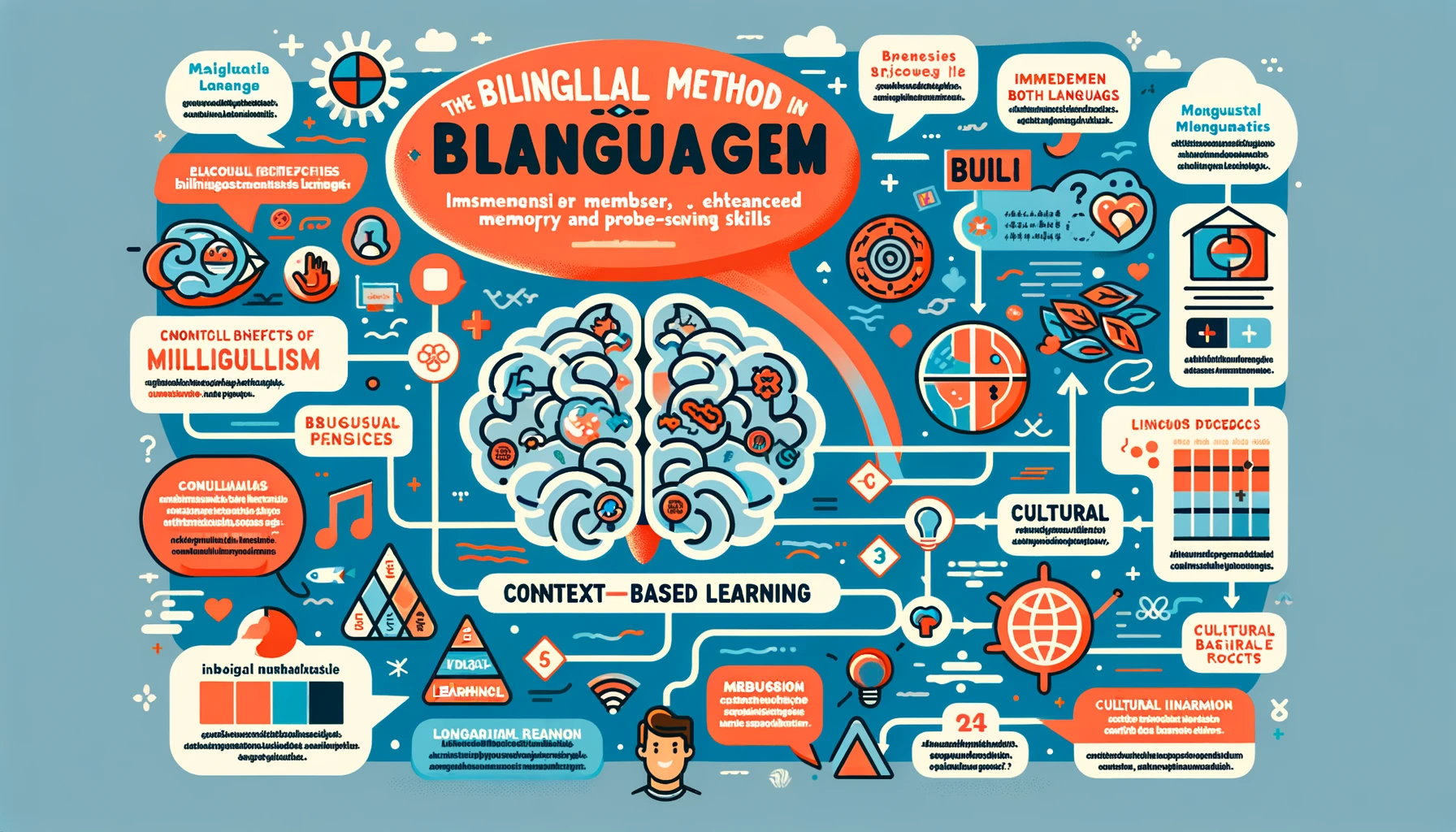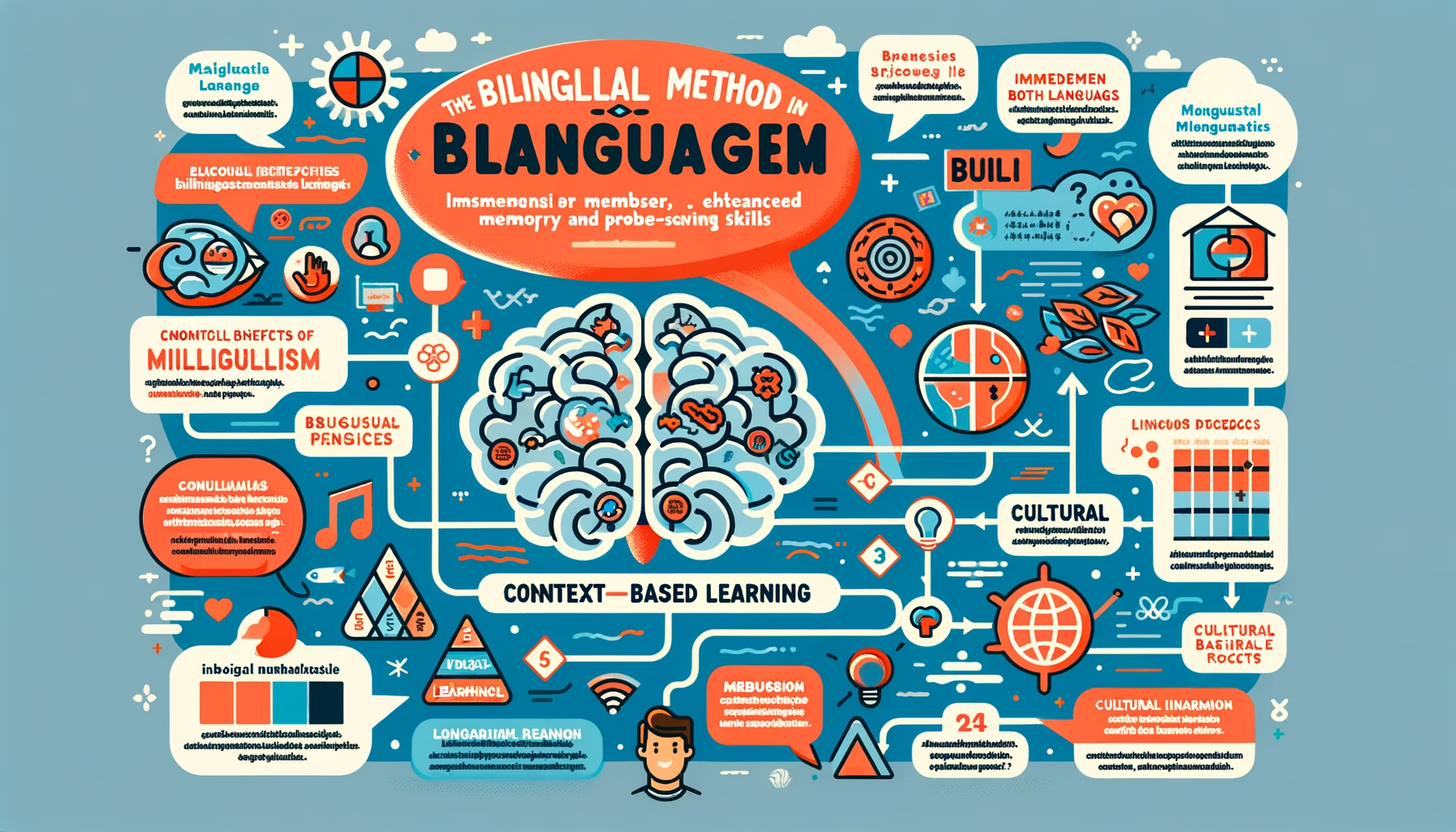Explore the power of the bilingual method in language learning. Gain insights into its benefits, tips to maximize your language acquisition using this method, and more. Start your bilingual journey today!
While learning his mother tongue the child grasps the situation or the concept and learns to express it in the mother tongue simultaneously. The advocates of the bilingual method say that while learning a second or a foreign language, there is no need to recreate the situation. Instead we should make use of the mother tongue of the child. This is convenient However, it is only the teacher who uses the mother tongue and not the students.
What Is Bilingual Method In Language And Linguistics.

According to William Mackey (1965). Selection Gradation. The Bilingual Method embodies these principles Besides according to C.J. Dodson (1963) a good method should have the following features to promote “thinking” in the language.
It must be simple.
- . It must strike a balance between the spoken and. the written word and accuracy and fluency
- Constant revision of what is taught and learnt.
- . A new method must offer 8 new approach to the application of translation work.
- The method must give the teacher opportunity to promote inter-communication between himself and individual pupils.
- The method must be sufficiently flexible to Copt with various classroom conditions and the pupils’ specific and general abilities.
- . The method must ensure that the pupil is given the opportunity of having a large number of contacts with the target language than he receives with present methods.
The experiment carried out by Dodson in Wales proved that the mother tongue, when used as a meaning conveyor, facilitates rather than hinders the imitation responses of the pupils. This sparing use of the mother Longue also releases more time for practice and active contact with the foreign language which is crucial at the beginning stages for acquisition of correct language habits.
There are four steps of presentation involved in the Bilingual Method
Step 1: Imitation. The students learn how to speak a small range of basic sentences
Step 2: Interpretation: This step is to help the students to overcome the difficulty of welding together sound and meaning, and to switch rapidly from one language to the other.
Step 3: Substitution and Extension. This stage will wean the students away from the fixed sentences of the basic situation by widening the sphere of activity and introducing stimulatory concept chains.
Step 4: Independent production of sentences: This is b creative process and the pupils are led to this activity by a gradual process through the preceding three steps. At this stage the students do not need a spoken stimulus either in the mother tongue or in the foreign language.
The Bilingual Method has added a new dimension to second language teaching by making it possible for the quantitative and qualitative acquisition of language skills
Advantages of Bilingual Method.
Some experiments establish the fact that the Bilingual Method is more effective than the Direct Method The advantages of the Bilingual Method are as under :
It saves the botheration of explaining the meanings of words through contextualized presentation.
- It makes use of the student’s knowledge of the mother tongue
- The meanings of words are explained by the teacher accurately It is thus that the Bilingual Method, like ‘he Translation Method, ensures accuracy
- A lot of stress is laid on speech. Students are made to do a lot of patterns practice. The result is that they become fluent speakers of the language Thus the Bilingual Method, like the Direct Method ensures fluency.
- The Bilingual Method can be used successfully even by an average teacher of English
- It does not require the help of audio-visual aids
BILINGUAL METHOD AND OTHER METHODS
The Bilingual Method and the Translation Method : The Bilingual Method is not the same „as the Translation Method. It differs from the Translation Method in two important respects
- In the Bilingual Method, it is only the teacher who uses the mother tongue and that Loo for a limited purpose, i c , to explain the meaning in the mother tongue In the Translation Method, both the teacher and the student use the mother tongue liberally. As the meanings of new words m both these methods are explained in the mother tongue, they ensure accuracy
- In the Bilingual method, there is a lot of pattern practice, but no pattern practice is provided in the Translation Method. Plus we find that the Bilingual method is better than the Translation Method
The Bilingual Method The Bilingual Method, like emphasis on speech Thus accuracy. But it differs from following respects
- In the Bilingual Method the teacher explains the meanings in the mother tongue, but in the Direct Method the meanings are explained by material association explanation or using the word in appropriate context.
- More pattern practice is provided in the Bilingual Method than in the case with the Direct Method.
- Even an average teacher of English can make a success of the Bilingual Method But highly trained teachers are needed for the Direct Method
- There is no need to use audio visual aids in the Bilingual Method, but aids are a must in the Direct Method
Bilingual Method and the Structural Approach.
Both the Bilingual Method and the Structural Approach lay emphasis on pattern practice. Both stress the importance of speech. The points of differences between the two are as under:
- In the Bilingual Method the teacher explains the meanings in the mother tongue; but in the Structural Approach, the meanings are explained by material association, explanation or using the word in appropriate context
- Even an average teacher of English can make a success of the Bilingual Method. But highly trained teachers are needed for the Direct Method.
- There is no need to use audio-visual aids m the Bilingual Methods but aids are a must in the Direct Method.
In conclusion, the bilingual method offers a unique and effective approach to language acquisition. By immersing yourself in the target language and embracing its culture, you can enhance your communication skills, expand your vocabulary, and gain a deeper understanding of different cultures. So, why wait? Start your bilingual journey today and unlock a world of new opportunities.
